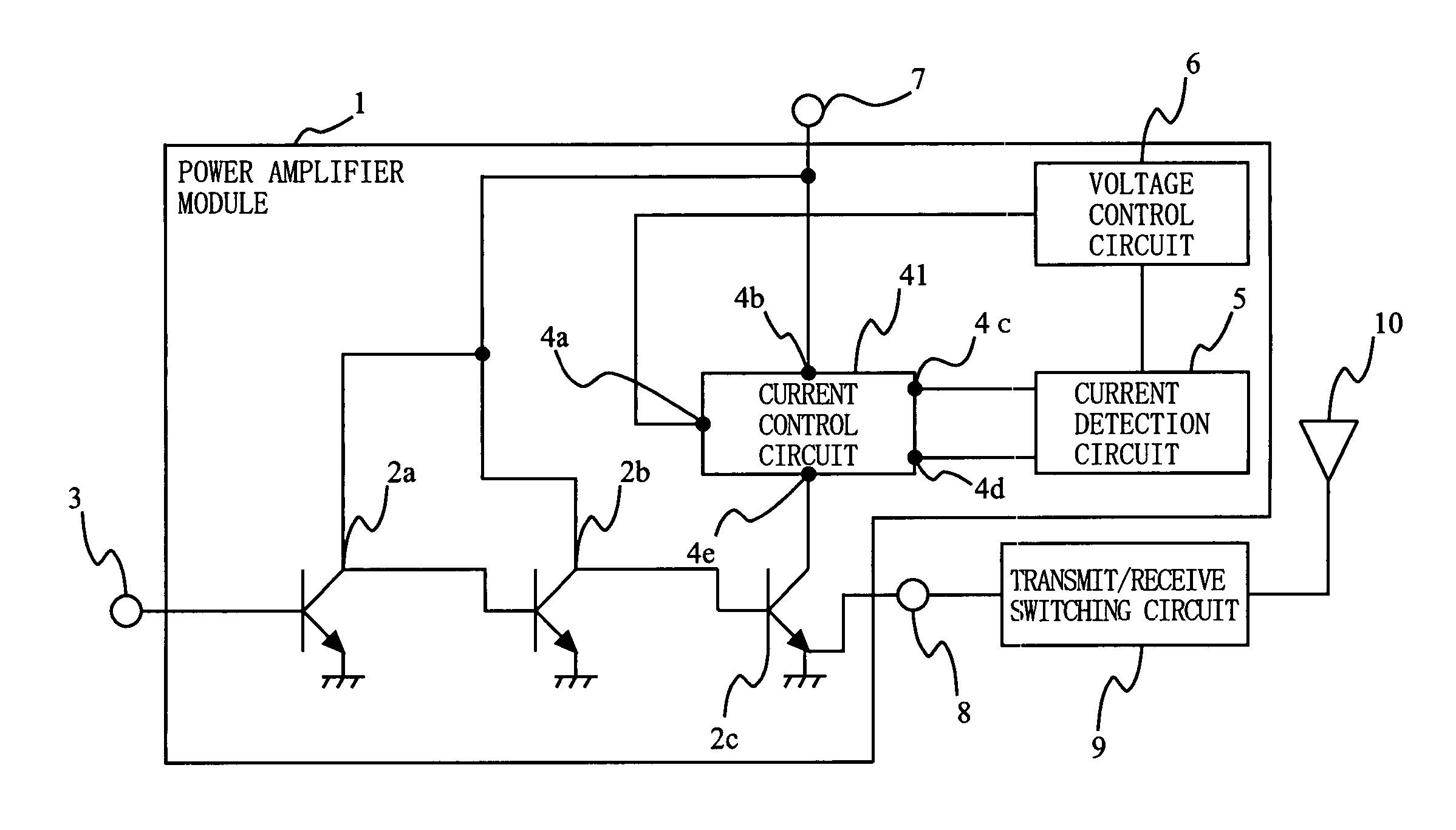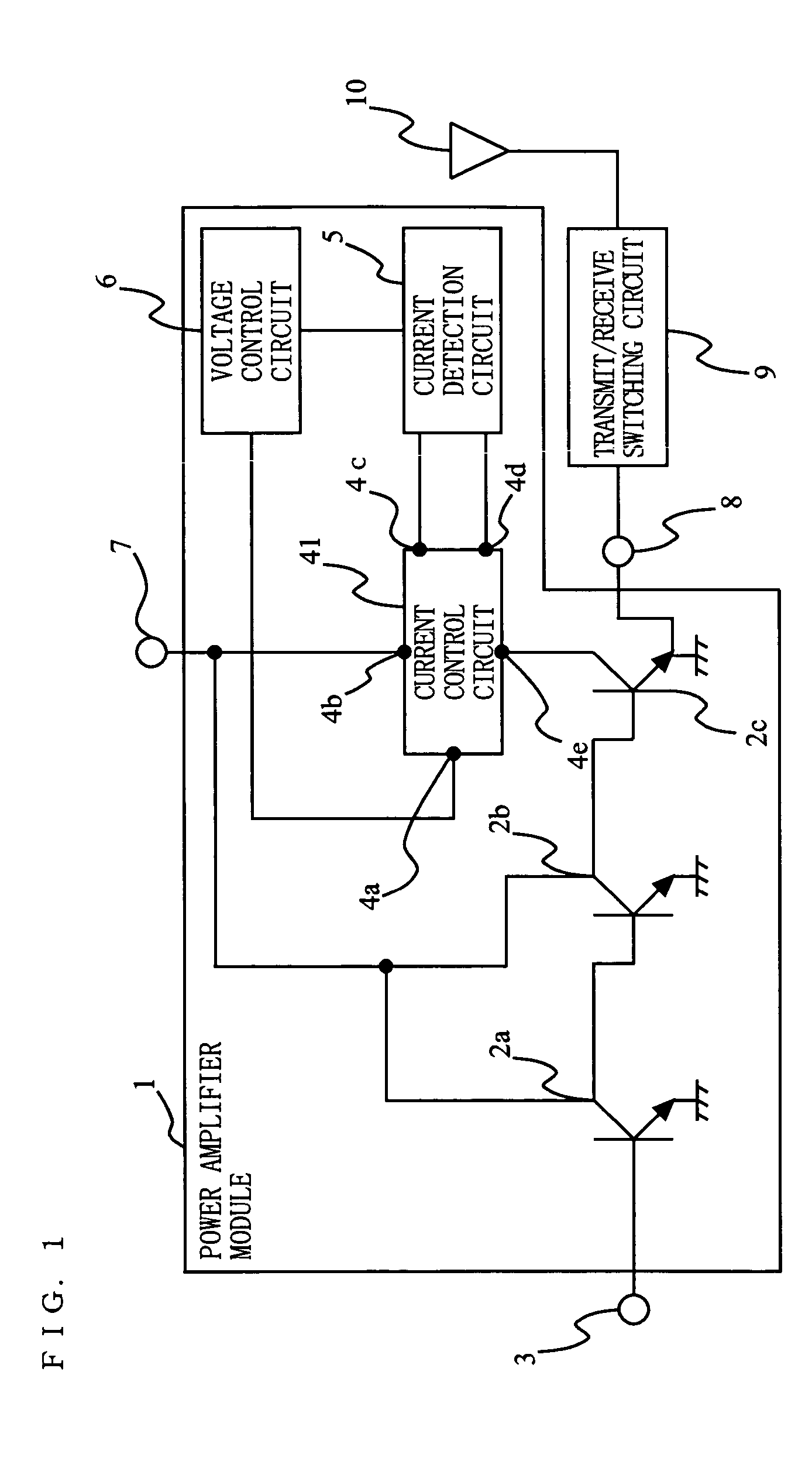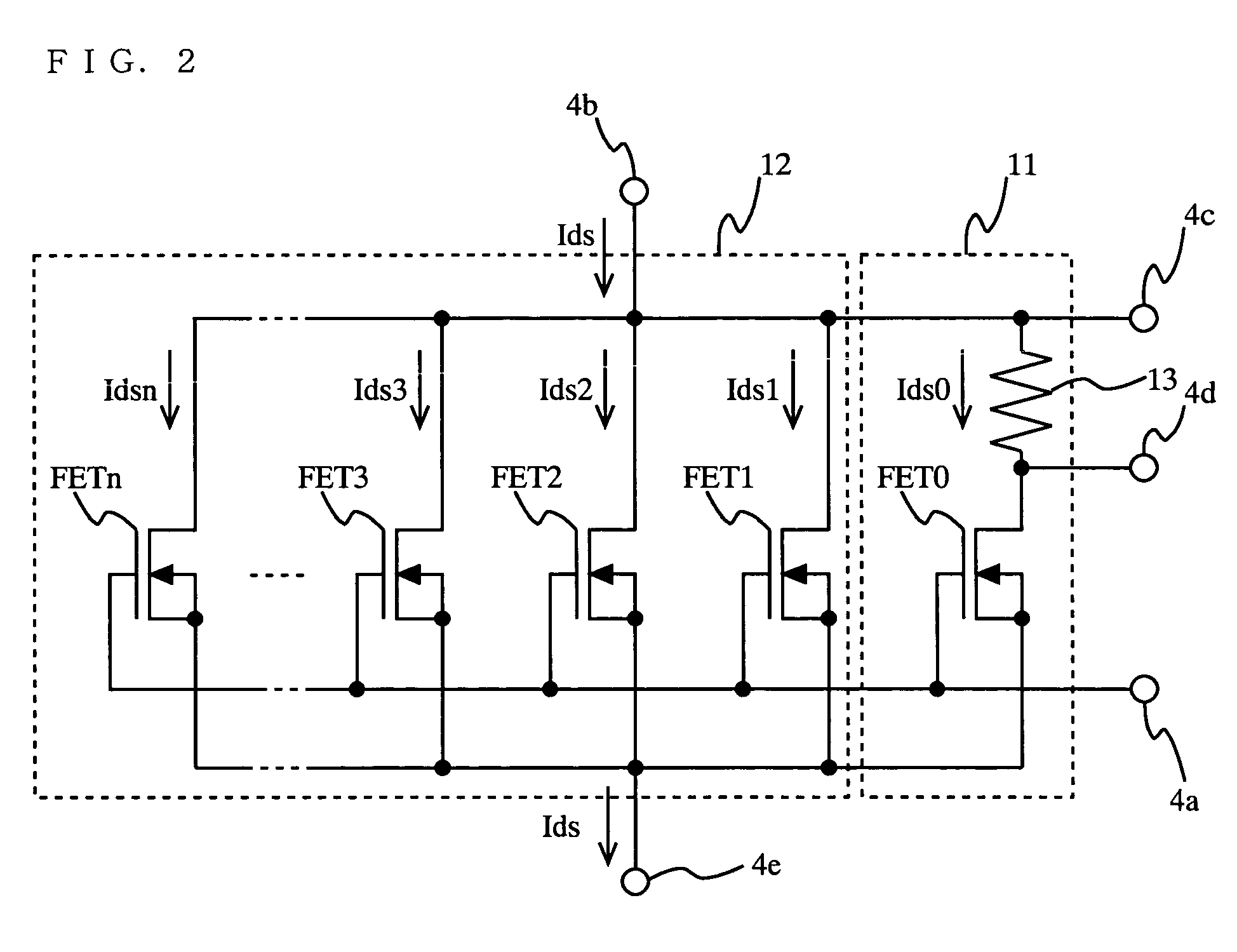Power amplifier module
a power amplifier and module technology, applied in the direction of single-ended push-pull amplifiers, high-frequency amplifiers, gain control, etc., can solve problems such as thermal runaway, and achieve the effect of reducing consumption current loss and preventing damage to power amplifiers
- Summary
- Abstract
- Description
- Claims
- Application Information
AI Technical Summary
Benefits of technology
Problems solved by technology
Method used
Image
Examples
first embodiment
[0048](First Embodiment)
[0049]With reference to the drawings, a power amplifier module according to a first embodiment of the present invention will be described below. In order to prevent a power amplifier from being damaged due to reflected power from the antenna side, the power amplifier module according to the present embodiment has the function of detecting the magnitude of an electrical parameter, such as the consumption current of the power amplifier, and controlling the magnitude of the consumption current. Further, the power amplifier module according to the present embodiment can reduce a loss of consumption current which occurs when detecting the consumption current. FIG. 1 is a diagram illustrating a configuration of the power amplifier module.
[0050]The power amplifier module shown in FIG. 1 includes a first amplification circuit 2a, a middle amplification circuit 2b, a last amplification circuit 2c, an input terminal 3, a current detection circuit 5, a voltage control c...
second embodiment
[0075](Second Embodiment)
[0076]A power amplifier module according to a second embodiment of the present invention will be described below with reference to the drawings. The power amplifier module according to the present embodiment differs from the power amplifier module according to the first embodiment in that while in the first embodiment the last amplification circuit 2c and the current control circuit 41 are provided separately, in the present embodiment a current control function is incorporated in a last amplification circuit. FIG. 7 is a diagram illustrating a configuration of the power amplifier module according to the present embodiment.
[0077]The power amplifier module shown in FIG. 7 includes a first amplification circuit 2a, a middle amplification circuit 2b, a last amplification circuit 2d on which a current control circuit is mounted, an input terminal 3, a current detection circuit 5, a voltage control circuit 6, a power supply terminal 7, an output terminal 8, and a...
third embodiment
[0096](Third Embodiment)
[0097]A power amplifier module according to a third embodiment of the present invention will be described below with reference to the drawings. The power amplifier module according to the present embodiment differs from the power amplifier module according to the first embodiment in that while in FIG. 4 only one VR 14 is provided, in the present embodiment a plurality of VRs 14 are provided. This enables detection of temperature at a plurality of points in the power amplifier module. FIG. 10 is a diagram illustrating a configuration of the power amplifier module according to the present embodiment.
[0098]The power amplifier module shown in FIG. 10 includes a first amplification circuit 2a, a middle amplification circuit 2b, a last amplification circuit 2c, an input terminal 3, a voltage control circuit 6, a power supply terminal 7, an output terminal 8, a transmit / receive switching circuit 9, a current control circuit 51, and a current detection circuit 52. In...
PUM
 Login to View More
Login to View More Abstract
Description
Claims
Application Information
 Login to View More
Login to View More - R&D
- Intellectual Property
- Life Sciences
- Materials
- Tech Scout
- Unparalleled Data Quality
- Higher Quality Content
- 60% Fewer Hallucinations
Browse by: Latest US Patents, China's latest patents, Technical Efficacy Thesaurus, Application Domain, Technology Topic, Popular Technical Reports.
© 2025 PatSnap. All rights reserved.Legal|Privacy policy|Modern Slavery Act Transparency Statement|Sitemap|About US| Contact US: help@patsnap.com



